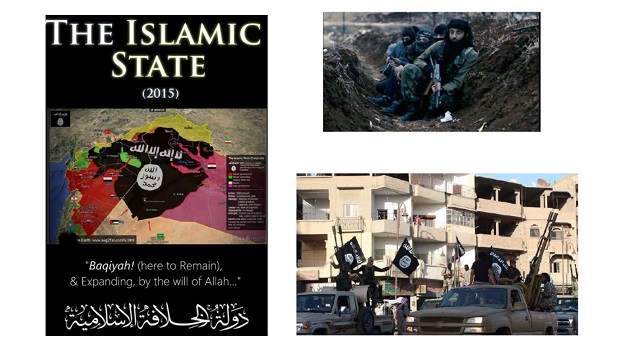International
ISIS supporter used Canada in terror plot to massacre New York City Jews, motivated by October 7th Hamas attack on Israel: FBI

 News release from The Bureau
News release from The Bureau
United States investigators disrupted the anti-Semitic terror plot of a 20-year-old Pakistani citizen residing in Canada, who was preparing to cross the U.S.-Canada border to carry out a mass shooting at Jewish religious centers in New York City. His aim was to unleash bloodshed on October 7, 2024, marking the anniversary of Hamas’ deadly incursion from Gaza into Israel.
According to an FBI complaint on September 4, 2024, Muhammad Shahzeb Khan, an ISIS supporter, was en route to the border, having told undercover agents he had secured funding for the operation—even texting a photo showing stacks of Canadian currency—and bragging he was “locked and loaded” for the attack.
The Bureau is a reader-supported publication. To receive new posts and support my work, consider becoming a free or paid subscriber.
Undercover officers and informants had infiltrated the suspect’s network in Canada, intercepting online and encrypted communications, gathering months of evidence that detailed his plans to target Jewish civilians and religious institutions in Brooklyn. Khan believed the city’s large Jewish population made it the perfect site to inflict maximum casualties.
“Brothers, hear me out, why not we do an attack in New York,” Khan texted to FBI agents. “[The] population of Jews in New York City is 1 million,” he continued, explaining he had scanned Google Earth maps of various New York neighborhoods and could see “tons of Jews walking around,” and “we could rack up easily a lot of Jews.”
Khan’s murderous intentions weren’t limited to a single attack in New York City. The FBI’s complaint alleges he sought to form an “offline cell” of ISIS supporters in the U.S., coordinating multiple assaults on Jewish targets.
And demonstrating his intent and some level of sophistication in terror financing and money laundering, Khan discussed plans to fund and arm ISIS operators in the United States with AR-style rifles through cross-border cryptocurrency accounts.
This disrupted ISIS-related plot comes amid broader fears in the U.S. about the risks posed by Canada’s immigration policies. Recently, U.S. Senator Marco Rubio expressed concern over Canada’s acceptance of Palestinian refugees from Gaza. In a letter to U.S. Homeland Security Secretary Alejandro Mayorkas, Rubio warned that the refugee program could increase the risk of individuals with ties to terror groups gaining easier access to the U.S., complicating efforts to secure the border.
The FBI’s investigation also highlights the resurgence of ISIS-linked terrorism in North America.
The group and its affiliates have claimed responsibility for major attacks worldwide, including the November 2015 Paris attacks that killed 130 people, the 2016 Brussels bombings that left 32 dead, and the Nice truck attack, which killed over 80. More recently, ISIS-linked groups carried out bombings in Kerman, Iran, in 2024, killing 94 people, and a deadly assault on a concert hall in Moscow that same year, which claimed at least 60 lives.
The FBI’s case against Khan, filed three days ago in the Southern District of New York, alleges that he began discussing his plan in July 2024 with undercover agents he believed to be fellow ISIS supporters.
He initially considered targeting “City-1,” but dismissed it as insufficient, stating, “City-1 is nothing compared to NYC” because it had “only 175k Jews.”
On July 31, 2024, Khan elaborated on his vision of a coordinated attack, telling the undercover agents he envisioned six attackers splitting into three teams to “launch three attacks simultaneously on different locations, maximizing the casualty count.”
Khan continued to communicate with the undercover agents throughout August, referencing a failed ISIS attack in Toronto as evidence of law enforcement vigilance and urging heightened caution. He emphasized that their “cell should be small and well-armed” and that they should avoid social media to stay under the radar.
To enter the U.S., Khan arranged for a human smuggler to help him cross the border from Canada, planning to travel to New York City and then by bus to his attack location.
By early September, Canadian authorities began tracking Khan’s movements. On the morning of September 4, 2024, RCMP officers observed Khan entering a vehicle in Toronto, traveling toward Napanee, Ontario. After transferring to a second vehicle with a new driver, Khan continued eastbound toward Montreal, intending to cross the U.S.-Canada border from Quebec.
His plans became more detailed as he neared his attack date. He identified Jewish religious centers in Brooklyn, sending the undercover agents a photograph of a specific area inside one center where he intended to carry out the attack. He also urged the agents to acquire firearms, ammunition, and tactical gear, instructing them to purchase “some good hunting [knives] so we can slit their throats.”
Khan intended to time his assault with Jewish religious events, ensuring maximum casualties, and planned to record a video pledging allegiance to ISIS and send it to the group’s media outlet, Amaq, to claim responsibility.
The evidence also provides chilling insight into the psychology and beliefs that drive ISIS supporters. On August 18, Khan sent the undercover agents a document urging them to read it, explaining that “a martyr bypasses all this questioning of the grave etc.”
U.S. and Canadian authorities continue to investigate the case and assess whether Khan had any additional accomplices or links to other extremist networks.
The Bureau is a reader-supported publication. To receive new posts and support my work, consider becoming a free or paid subscriber.
Support a public interest startup. We break international stories and this requires elite expertise, time and legal costs.
Business
Chinese firm unveils palm-based biometric ID payments, sparking fresh privacy concerns

By Ken Macon
Alipay’s biometric PL1 scanner uses vein and palm-print data for processing payments, raising security concerns over the storage and use of permanent biometric data.
Alipay, the financial arm of Alibaba, has introduced a new palm-based biometric terminal, dubbed the PL1, which enables individuals to make purchases simply by presenting their hand – no phone, card, or PIN required. Positioned as a faster, touch-free alternative for payment, this system reflects a growing industry shift toward frictionless biometric transactions.
At the core of the PL1 is a dual-mode recognition system that combines surface palm print detection with internal vein mapping. This multi-layered authentication relies on deeply unique biological signatures that are significantly harder to replicate than more common methods like fingerprints or facial scans. Alipay reports that the device maintains a false acceptance rate of less than one in a million, suggesting a substantial improvement in resisting identity spoofing.
Enrollment is designed to be quick: users hover their palm over the sensor and link their account through a QR code. Once registered, purchases are completed in around two seconds without physical interaction. During early trials in Hangzhou, this system reportedly accelerated checkout lines and contributed to more hygienic point-of-sale environments.
The PL1 arrives at a time of rapid expansion in the biometric payments sector. Forecasts estimate that more than 3 billion people will use biometrics for transactions by 2026, with total payments surpassing $5 trillion. Major players are already onboard: Amazon has integrated palm authentication across U.S. retail and healthcare facilities, while JP Morgan is gearing up for a national deployment in the same year.

Alipay envisions the PL1’s use extending well beyond checkout counters. It is exploring applications in public transit, controlled access facilities, and healthcare check-ins, reflecting a broader trend toward embedding biometric systems in daily infrastructure. However, while domestic deployment benefits from favorable policy conditions, international expansion may be constrained by differing legal standards, particularly in jurisdictions that enforce stringent rules on biometric data usage and consent.
Despite the technological advancements and convenience the PL1 offers, privacy remains a major point of contention. Unlike passwords or cards that can be reset or replaced, biometric data is immutable. If compromised, individuals cannot simply “change” their palm patterns or vein structures. This permanence heightens the stakes of any potential data breach and raises long-term concerns about identity theft and surveillance.
Alipay’s approach, storing encrypted biometric templates locally on devices and restricting data flow within national border, does address certain regulatory demands, especially within China, but the broader implications of biometrics are likely to be a growing privacy and surveillance concern in the coming years.
conflict
Marco Rubio says US could soon ‘move on’ from Ukraine conflict: ‘This is not our war’

From LifeSiteNews
Secretary of State Marco Rubio is calling the EU/UK bluff here because he knows without the U.S. the EU/UK will not commit to fight Russia.
Secretary of State Marco Rubio spoke to reporters in Paris on April 18 about the prolonged peace talks between Russia and Ukraine. However, a frustrated Rubio warned that the U.S. could “move on” from its involvement in negotiations to end the war if no progress is made “within a matter of days and weeks.” That’s the mainstream media narrative.
The non-pretending summary is that Ukraine, France, Great Britain, the EU, NATO, et al are all trying to retain their interests in the conflict. Russia has simple terms, but the war machinery controlled by the intel apparatus (CIA and EU) and the financial stakeholders in the EU region are unhappy. A frustrated Secretary Rubio says, make up your mind, if no deal – we’re done.
Having followed this very closely, here’s what “we’re done” likely means.
President Trump ends the U.S. side of the proxy war. President Trump pulls back all support for Ukraine, stops sending money, weapons, and, to the extent he can, intelligence to Ukraine. This opens the door for Russia to go full combat as the ground thaws, without concern for U.S. to engage.
The EU will have to step up with funding, intelligence, and war material to continue supporting Ukraine. Rubio is calling the EU/UK bluff here because he knows without the U.S. the EU/UK will not commit to fight Russia.
Remember that if no one does anything, Russia has already gained the ground they want and will just continue grinding western Ukraine to ever-expanding rubble. Factually, doing nothing is a big win for Russia, especially if Trump withdraws.
Reprinted with permission from Conservative Treehouse.
-

 2025 Federal Election1 day ago
2025 Federal Election1 day agoBREAKING: THE FEDERAL BRIEF THAT SHOULD SINK CARNEY
-

 2025 Federal Election2 days ago
2025 Federal Election2 days agoCHINESE ELECTION THREAT WARNING: Conservative Candidate Joe Tay Paused Public Campaign
-

 2025 Federal Election2 days ago
2025 Federal Election2 days agoOttawa Confirms China interfering with 2025 federal election: Beijing Seeks to Block Joe Tay’s Election
-

 2025 Federal Election2 days ago
2025 Federal Election2 days agoReal Homes vs. Modular Shoeboxes: The Housing Battle Between Poilievre and Carney
-

 2025 Federal Election22 hours ago
2025 Federal Election22 hours agoMark Carney Wants You to Forget He Clearly Opposes the Development and Export of Canada’s Natural Resources
-

 International15 hours ago
International15 hours agoPope Francis’ body on display at the Vatican until Friday
-

 Business1 day ago
Business1 day agoHudson’s Bay Bid Raises Red Flags Over Foreign Influence
-

 2025 Federal Election22 hours ago
2025 Federal Election22 hours agoCanada’s pipeline builders ready to get to work


